Opening and Closing Checklist Template: Get Our FREE Procedure for Restaurant, Bars & Retail Businesses!
Opening and closing a retail business, like a restaurant or café, is the most important jobs of the day as any owner or general manager would know, which is why only the most trusted staff are given this responsibility.
Therefore, an opening and closing checklist template is a useful tool to keep staff accountable while ensuring the day-to-day operations run smoothly and consistently.
Even a manager who may have worked at a venue for years can easily forget to do something without referring to the checklist if they get distracted. For example, a supplier arrives or the phone rings and they’ll forget what they were about to do.
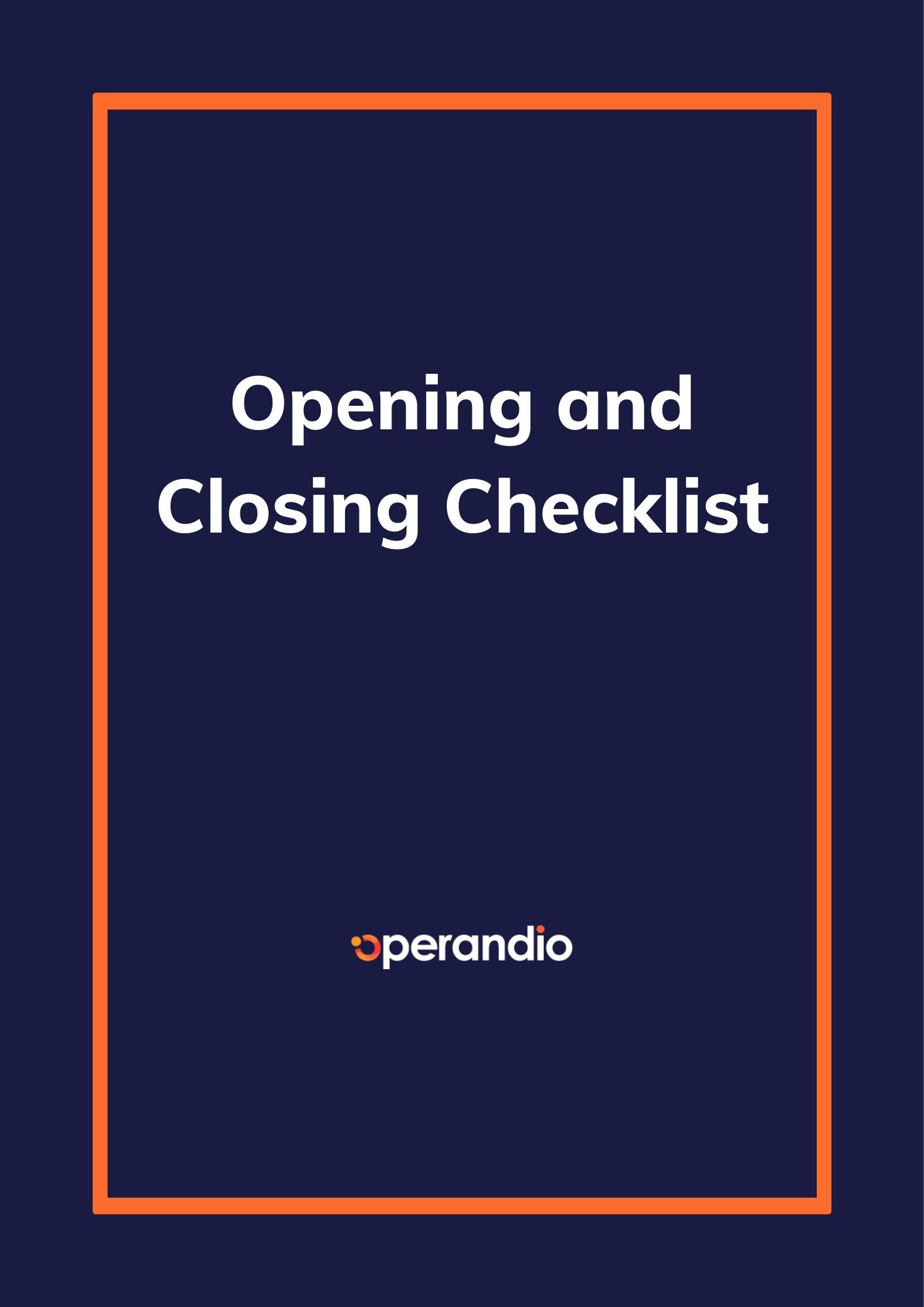
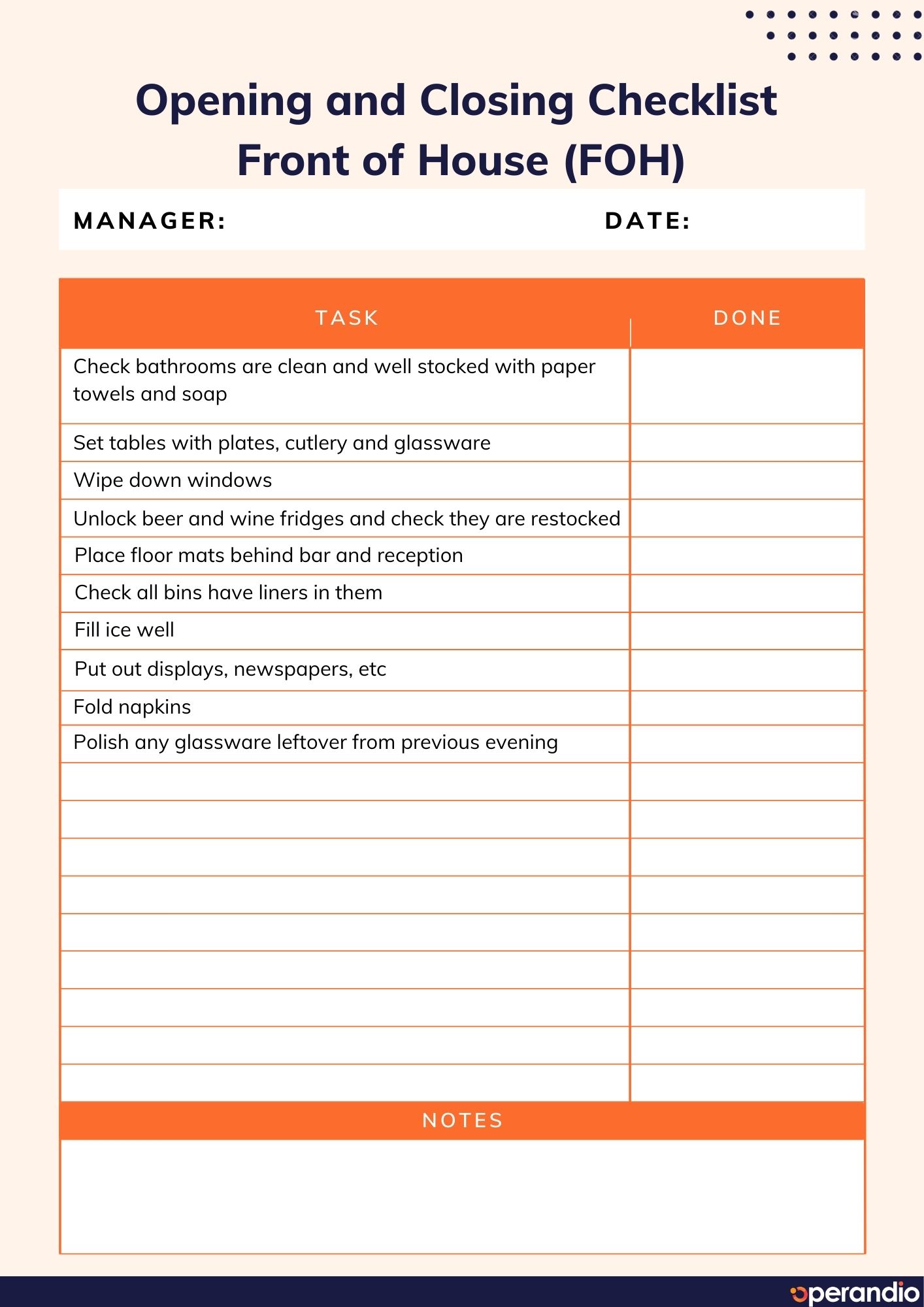
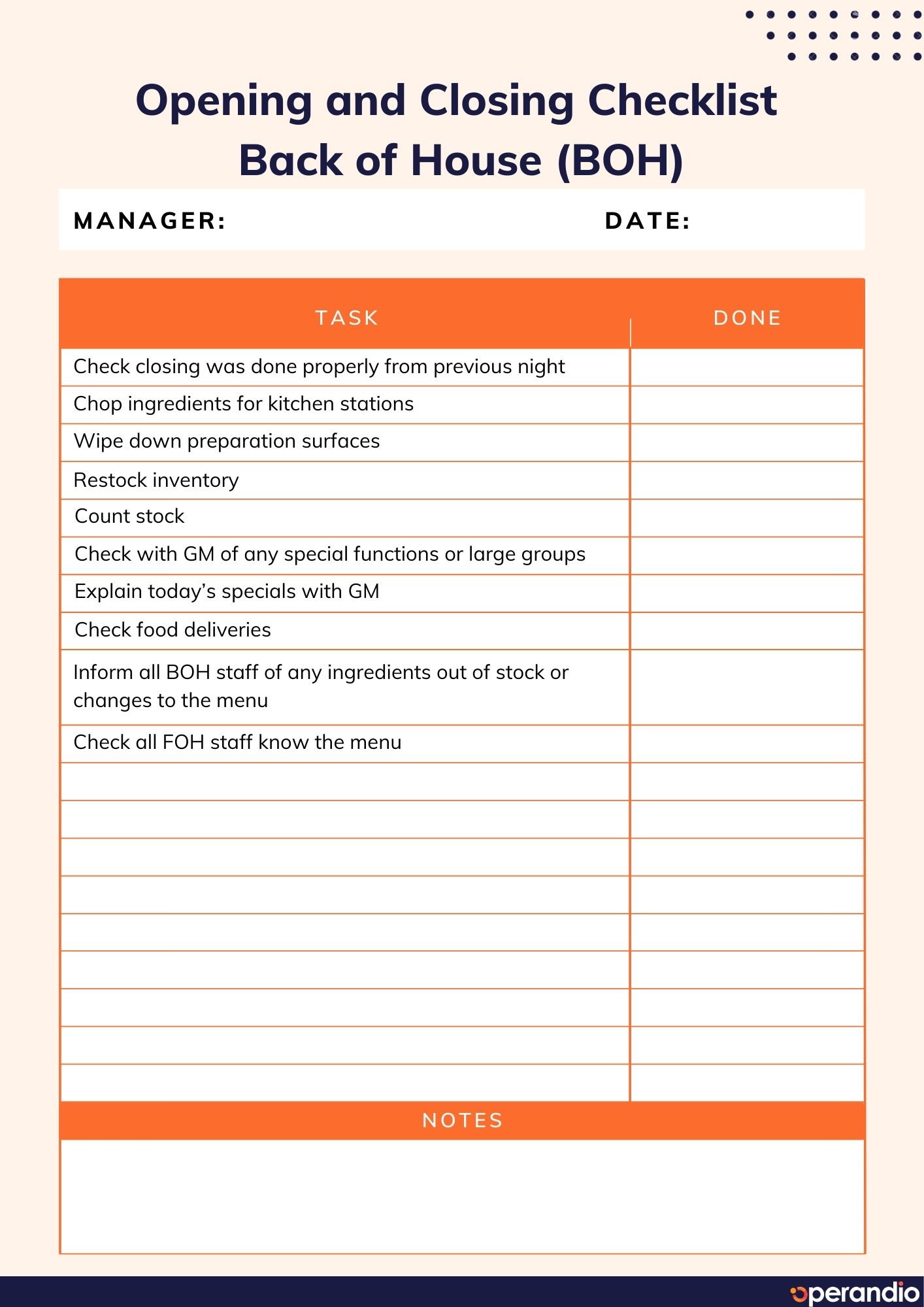
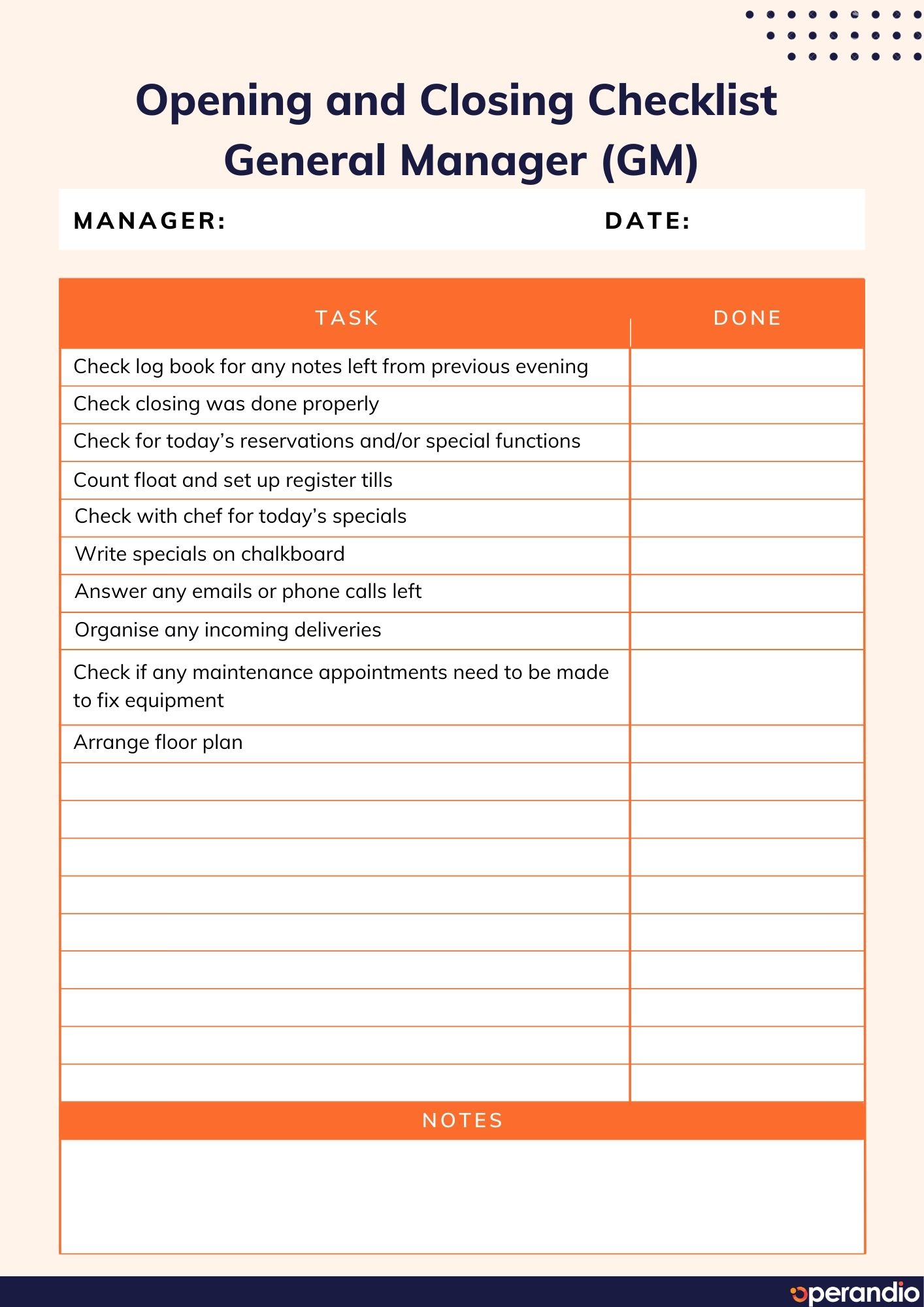
Closing a venue can be tiring if you are open late hours or the manager has been working overtime, so a checklist can be an easy way to make sure everything gets done correctly.
This article includes:
- Our FREE Opening and closing checklist template for: GM, FOH and BOH
- Benefits of having an opening and closing checklist template
- Tips on how to implement an opening and closing checklist template system
- How to digitize your opening and closing checklist template into a consistent workflow for your employees
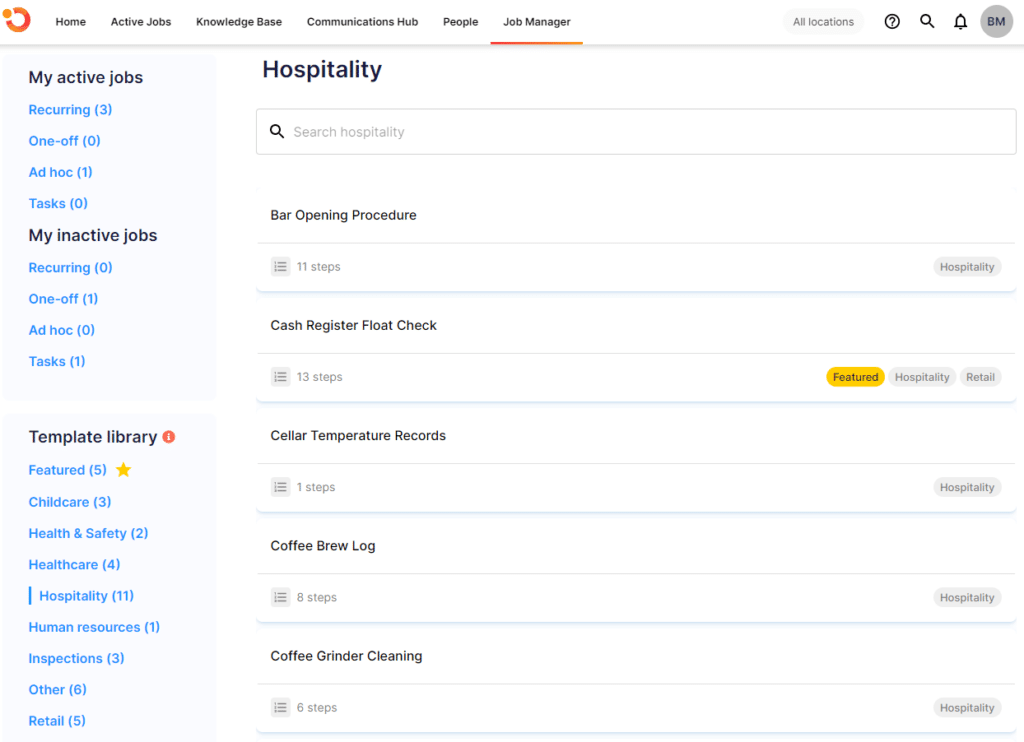
Benefits of having an opening and closing checklist
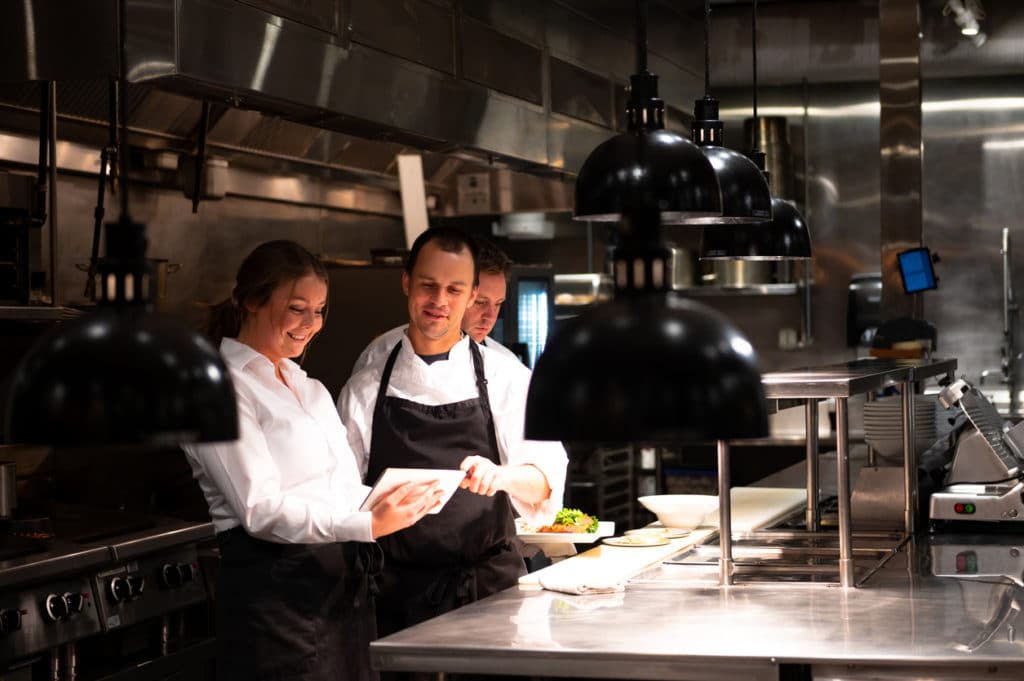
Having an opening and closing checklist has benefits no matter how large or small your venue is. It’s a great tool to open and close your venue in a more organized and thorough way. The standards that you set for your restaurant or cafe will be adhered to day in and day out.
Staff training and routine
Humans are creatures of habit, if you have a checklist for your staff, chances are they’ll work from the top to the bottom of that list. Opening or closing a venue then becomes a repetitive process and they’re more likely to do it in the same order every time. Without a checklist, that person will adopt their own routine or fall into previous habits that they picked up with a former employer.
A checklist is also useful for new employees and in hospitality, there’s often a high turnover rate. The hospitality industry can be extremely chaotic when it’s busy so sometimes there aren’t opportunities to train staff properly. A checklist is great for a new waiter because even if the other staff are doing other jobs, they can see what else needs to be done on the list. Of course, every new employee should be trained on opening or closing procedures properly and time should be set aside to do that.
Staff accountability
There’s nothing worse in hospitality than opening a venue and realizing that the team the night before hasn’t closed properly. Not only are you now behind on your opening tasks because you’re cleaning up from the night before but it’s also made you resentful to other staff members who think they can get away with being lazy.
Staff accountability means everyone will take extra care to make sure all tasks are completed before leaving for the evening and the supervisor should check that all items on the list have been done to a high standard.
Cost saving
Hospitality is a tough industry to work in and margins are thinner now than they’ve ever been. At the end of a long night or day, it can be easy for a staff member to forget to switch off the lights, the heating or turn on the alarm. These might seem like minor things, but the cost can add up quickly whether that’s through electricity bills or theft. When these things are on the checklist there’s a far lower chance of the closing team forgetting to do that. Not only will your bills go down but you’ll also be more energy-efficient.
Health and safety standards
Having a checklist increases health and safety standards for your venue. For example, a BOH closing task could be to make sure all large appliances are turned off with pots and pans safely stored away, and that all food contact surfaces are thoroughly cleaned and sanitized. Another example for an opening checklist for a café could be writing ‘wear gloves when handling food’. It may sound obvious, but some people like to cut corners where they can.
How to implement an opening and closing checklist
It’s a good idea to talk to all your staff about implementing a checklist rather than just doing one yourself. As the saying goes: ‘two heads are better than one’.
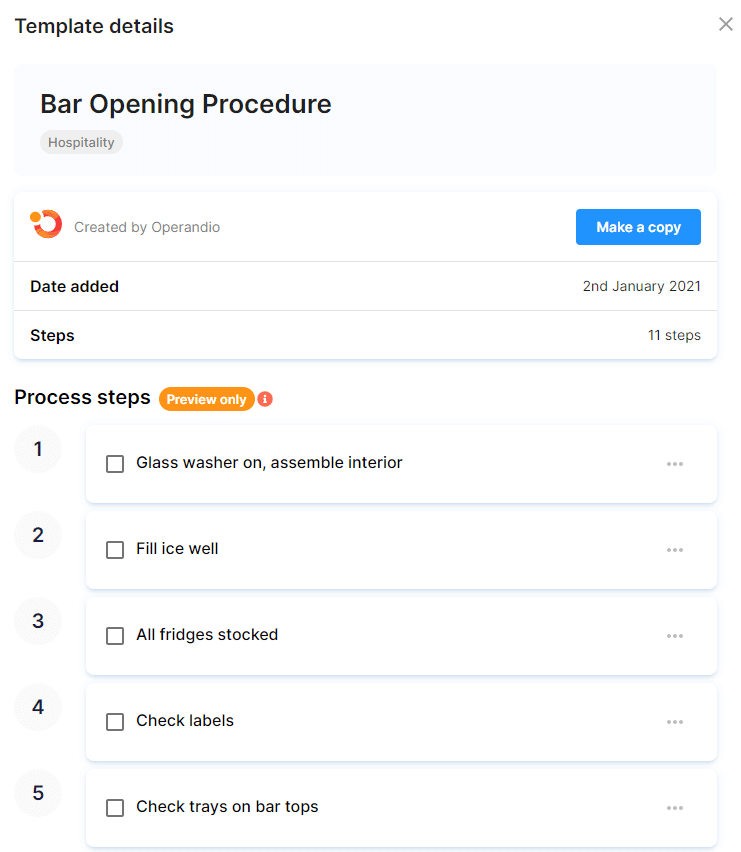
Brainstorm tasks
Speak to your general manager, the front of house staff and back of house staff (if you have a kitchen) to discuss what should go on the list. Everyone can add items to the list that they usually do when opening or closing so you don’t miss anything or have to add things on later. It’s better to be thorough so you don’t have to redo it in the near future.
Have a meeting
Have an all-staff meeting so everyone knows that you are going to implement a checklist. Explain that these will be done for every open and close for the days that you operate and that it’ll be expected that they’ll be filled out.
Monitor checklist completion
Create a folder (whether digital or paper) where all the checklists are signed and dated so they are in one central location. A digital checklist is much more efficient in a hospitality environment because paper can be easily stained or placed in the wrong place. If you have a tablet in the restaurant or cafe, you can show employees where they can submit their checklists.
How to digitize your opening and closing checklist
Want to digitize your opening and closing checklists but don’t know how? Check out Operandio as we’ve made paper checklists a thing of the past with our easy-to-use app. Not only can you create opening and closing checklists for your restaurant or café, but you can also integrate all your business operations into it. You can do everything from giving staff instant feedback on tasks to tracking business progress and sending out staff bulletins to keep them informed.
Opening and closing checklist template
Every venue will have different items on their opening and closing checklist but we wanted to share with you a few templates that we’ve created.
General manager (GM) opening checklist template:
| Done | General Manager/Supervisor Checklist |
| Check log book for any notes left from previous evening | |
| Check closing was done properly | |
| Check for today’s reservations and/or special functions | |
| Count float and set up register tills | |
| Check with chef for today’s specials | |
| Write specials on chalkboard | |
| Answer any emails or phone calls left | |
| Organize any incoming delivers | |
| Check if any maintenance appointments need to be made to fix equipment | |
| Arrange floor plan |
Front of House (FOH) opening checklist template:
| Done | FOH Checklist |
| Check bathrooms are clean and well stocked with paper towels and soap | |
| Set tables with plates, cutlery and glassware | |
| Wipe down windows | |
| Unlock beer and wine fridges and check they are restocked | |
| Place floor mats behind bar and reception | |
| Check all bins have liners in them | |
| Fill ice well | |
| Put out displays, newspapers, etc | |
| Fold napkins | |
| Polish any glassware leftover from previous evening |
Back of House (BOH) opening checklist template:
| Done | Head Chef Checklist |
| Check closing was done properly from previous night | |
| Chop ingredients for kitchen stations | |
| Wipe down food preparation surfaces | |
| Restock inventory | |
| Count stock | |
| Check with GM of any special functions or large groups | |
| Explain today’s specials with GM | |
| Check food deliveries | |
| Inform all BOH staff of any ingredients out of stock or changes to the menu | |
| Check all FOH staff know the menu |
To highlight the importance of a checklist in your business, author (and also an American surgeon) of The Checklist Manifesto Dr. Atul Gawande found that 150,000 Americans die each year during surgery and that half of all deaths were due to avoidable human error.
He set out to find a solution by searching for other high stakes professions that have severely minimised human error and have maintained a reputation for excellence, despite operating in risky and complex environments. He found that the construction and aviation industries were fantastic examples, both with excellent track records and also where mistakes and catastrophic events are extremely rare.
He found that it was because they have developed a habit of consulting a checklist before completing important tasks and making critical decisions.
Are you looking to replace paper checklists in your business? Operandio will help you replace paper in your business, improve staff accountability, delegate jobs and replicate consistently business processes across multiple locations.
Request an Operandio demo today, and take control of your business in ways you’d never have thought possible.


